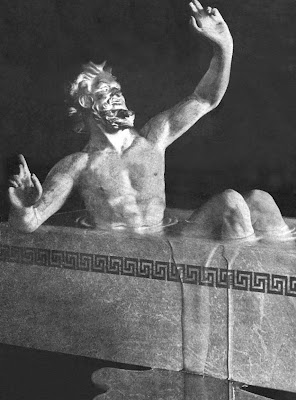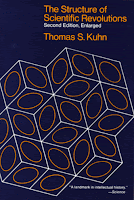Beauty, Plato wrote, is not easy to define, but something that "slips through and evades us". For this reason, many logic-oriented philosophical approaches tend to divorce and even oppose truth and beauty. "The question of truth", wrote logician Gottlob Frege in one of his most influential works, "would cause us to abandon aesthetic delight for an attitude of scientific investigation."

“Nature and Nature’s laws long lie hid in Night: God said ‘Let Newton be,’ and all was light.”Alexander Pope’sAs crazy as Sheldon Glasgow would have us "seen of the character of Newton," it should not be lost that the diversity of opinion coming from such a man, was to gather and understand all he could about who we are as human beings.
'Tis yours a Bacon or a Locke to blame,
A Newton's genius, or a Milton's flame:
But oh! with One, immortal one dispense;
The source of Newton's Light, of Bacon's Sense.
(Dunciad, III, 215-18)
The Alchemy search for understanding was more then the aesthetic delight that would appear so off offhandedly as a sign of the ignorance, was a constant search throughout the times for our humanity, that it was not without a sense of purpose that such persons would come to want to know about what materialization would be solidified in human experience.
Opticks
Opticks is a book written by English physicist Isaac Newton that was released to the public in 1704. It is about optics and the refraction of light, and is considered one of the great works of science in history.
Opticks was Newton's second major book on physical science. Even if he had not made his better-known discoveries concerning gravity and the invention of the calculus, Opticks would have given him the reputation as one of the greatest scientists of his time.
This work represents a major contribution to science, different from—but in some ways rivaling—the Principia. The Opticks is largely a record of experiments and the deductions made from them, covering a wide range of topics in what was later to be known as physical optics. That is, this work is not a geometric discussion of catoptrics or dioptrics, the traditional subjects of reflection of light by mirrors of different shapes and the exploration of how light is "bent" as it passes from one medium, such as air, into another, such as water or glass. Rather, the Opticks is a study of the nature of light and colour and the various phenomena of diffraction, which Newton called the "inflexion" of light.
In this book Newton sets forth in full his experiments, first reported in 1672, on dispersion, or the separation of light into a spectrum of its component colours. He shows how colours arise from selective absorption, reflection, or transmission of the various component parts of the incident light. His experiments on these subjects and on the problems of diffraction (which he never fully mastered) set the subject of optics on a new level.
The search for the understanding of the "refraction of light" was such an effort to see this aspect developed through our cultural understanding as to see the ultimate source as something that could descend here to earth from above, and that what was above, could be brought from the earth.
A final aspect of beauty that was often cited by readers might be called "deep play". This is the sense that we are actively engaged with something outside ourselves that is responding to us - rather than watching a game of our own construction or watching nature from a detached distance.
***
.jpg) Thomas Young, English scientist 1773-1829
Thomas Young, English scientist 1773-1829
Vision and colour theory: Young has also been called the founder of physiological optics. In 1793 he explained the mode in which the eye accommodates itself to vision at different distances as depending on change of the curvature of the crystalline lens; in 1801 he was the first to describe astigmatism; and in his Lectures he presented the hypothesis, afterwards developed by Hermann von Helmholtz, that colour perception depends on the presence in the retina of three kinds of nerve fibres which respond respectively to red, green and violet light. This theory was experimentally proven in 1959.
So we see where we can move forward in time as to the perfect of experimentation as to something that seem quite beautiful as evidence of the color of light could have been cast through a rain drop, or sifted through some glass object, as to reflect something equally beautiful, as a part of the white light as a recognition of the source.
See:Backreaction: 350 years Royal Society
See Also:Plato's Nightlight Mining Company is claiming Aristarchus Crater and Surrounding Region


































